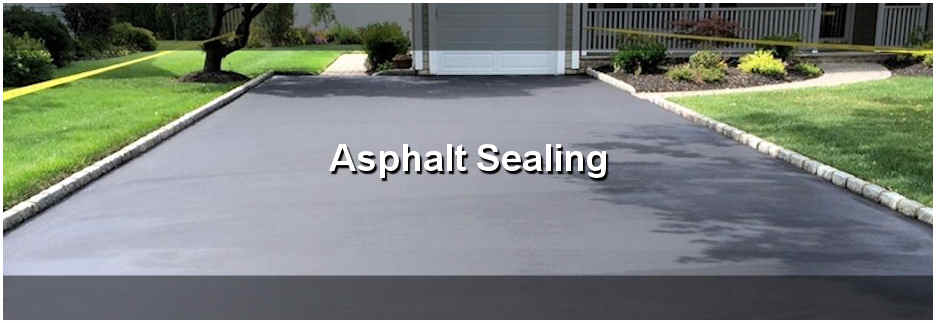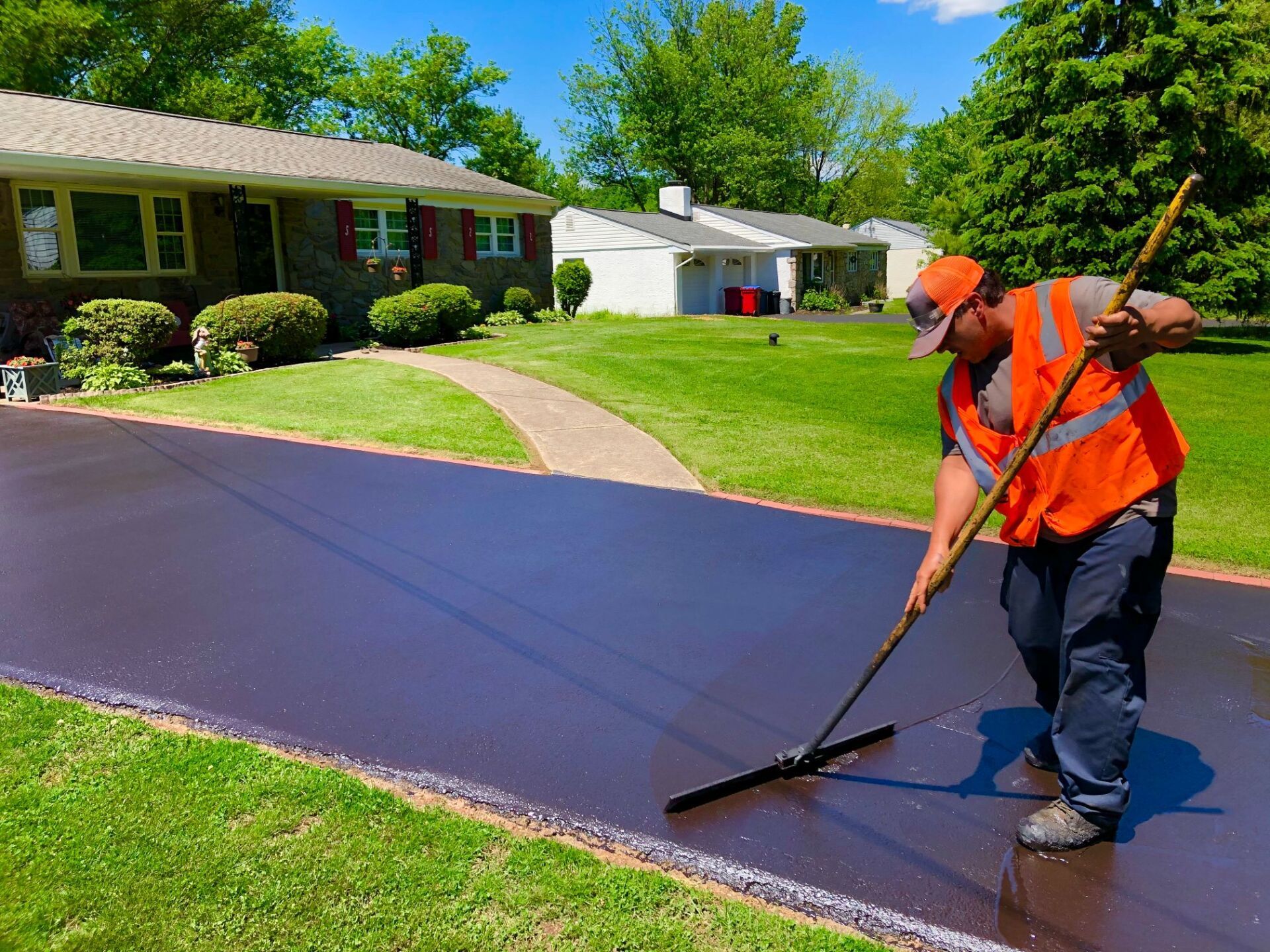Renew Angle Parking Lots: Asphalt Sealing Approaches Exposed
Renew Angle Parking Lots: Asphalt Sealing Approaches Exposed
Blog Article
Cold Mix Asphalt Vs. Hot Mix Asphalt: Which Is Right for You?

Composition Distinctions
Cold mix and warm mix asphalts vary significantly in their make-up, with distinct features that impact their performance and applications. Cold mix asphalt is created by emulsifying the asphalt binder with water and an emulsifying agent prior to blending it with accumulation. This method enables the asphalt to be workable at lower temperature levels, making it excellent for temporary fixings and for use in cooler weather. Warm mix asphalt, on the various other hand, is made at high temperature levels, typically between 300-350 ° F, which helps to achieve much better compaction and a much more long lasting last product. The hot mix asphalt manufacturing procedure involves heating up the accumulation and asphalt binder separately before incorporating them at the asphalt plant.
Moreover, cool mix asphalt often tends to be less thick and extra adaptable than warm mix asphalt. This versatility makes it much better suited for areas with greater degrees of motion, such as driveways or roads with hefty website traffic. On the other hand, hot mix asphalt is known for its high resilience and resistance to rutting and breaking, making it a preferred selection for highways and high-traffic roads where long life is critical.
Setup Process Differences
The procedure of installing cool mix and hot mix asphalt exhibits significant differences in their procedures and needs. Cold mix asphalt, being an extra adaptable product, can be used straight from the bag or container onto the pocket or damaged location. It needs minimal preparation job, such as cleansing the area and condensing the cold blend with hand devices. This makes it a hassle-free choice for temporary and fast solutions. On the other hand, warm mix asphalt necessitates a much more fancy setup procedure. It entails heating up the combination to high temperature levels prior to laying it down on a correctly ready base. The prep work includes condensing the base, applying a tack coat, and making use of heavy machinery like pavers and compactors for a resilient and smooth finish. As a result of the heating demands, warm mix asphalt installations are commonly accomplished by experts with customized equipment, making sure a more structurally audio and long-term outcome.
Sturdiness and Long Life Aspects
When taking into consideration asphalt choices, sturdiness and longevity are essential factors to examine for long lasting sidewalk efficiency. Hot mix asphalt (HMA) is recognized for its extraordinary resilience and long life.
In terms of long life, HMA normally exceeds CMA due to its remarkable stamina and resistance homes. HMA sidewalks have a longer life span, calling for less constant repairs and upkeep, which can translate to asphalt repair cost financial savings over time. In addition, HMA pavements are a lot more easily adjustable to fulfill particular task requirements, additionally enhancing their sturdiness.
Price Considerations
Taking into consideration the financial ramifications is a crucial element when reviewing the choice between warm mix asphalt (HMA) and cool mix asphalt (CMA) for pavement projects. While the preliminary price of warm mix asphalt is generally greater than that of cool mix asphalt, HMA often offers a much more cost-efficient service in the lengthy run as a result of its superior sturdiness and long life. HMA is known for its ability to endure hefty website traffic lots and severe weather condition problems, decreasing the need for frequent repairs and upkeep. On the various other hand, cold mix asphalt is a lot more budget friendly upfront but may require more constant patching and resurfacing, leading to greater upkeep prices gradually.
Along with product expenses, it's necessary to take into consideration the expenditures connected with setup and maintenance when comparing HMA and CMA. HMA typically requires specific tools and skilled labor for proper installation, which can impact overall task prices. Alternatively, CMA is less complicated to function with and can commonly be used making use of easier techniques, possibly decreasing setup expenses. Ultimately, the decision between HMA and CMA need to think about not simply the first cost yet likewise the lasting financial effects to identify one of the most affordable choice for the certain sidewalk job.
Environmental Effect Contrast
Comparison of the environmental impacts between warm mix asphalt (HMA) and cool mix asphalt (CMA) discloses distinctive distinctions in sustainability techniques. HMA manufacturing calls for high temperature levels, leading to enhanced energy consumption and greenhouse gas exhausts.
Additionally, making use of CMA often involves reusing existing asphalt sidewalk, promoting resource preservation and decreasing the quantity of waste sent out to landfills. This recycling element further boosts the sustainability of CMA contrasted to HMA. In general, when thinking about the ecological impact, CMA arises as an extra ecologically sustainable choice because of its reduced power requirements, reduced discharges, and the potential for reusing existing materials. By going with CMA over HMA, road construction projects can contribute positively to environmental conservation initiatives.
Conclusion
Finally, the selection between chilly mix asphalt (CMA) and hot mix asphalt (HMA) relies on various aspects such as structure, setup procedure, resilience, longevity, cost, and ecological influence. angle parking. While CMA offers a cost-effective and fast option for small repairs, HMA ensures superior toughness and durability for rush hour areas. Consider these aspects carefully to establish which type of asphalt is the ideal choice for your paving needs

Thinking about the economic implications is a critical aspect when examining the selection between warm mix asphalt (HMA) and cool mix asphalt (CMA) for pavement jobs. While the first cost of warm mix asphalt is commonly greater than that of cool mix asphalt, HMA usually gives an extra affordable remedy in the long run due to its premium longevity and longevity. asphalt repair.Contrast of the environmental impacts between hot mix asphalt (HMA) and cold mix asphalt (CMA) discloses unique distinctions in sustainability methods.In conclusion, the selection between chilly mix asphalt (CMA) and hot mix asphalt (HMA) depends on various factors such as make-up, installment procedure, longevity, longevity, price, and environmental impact
Report this page